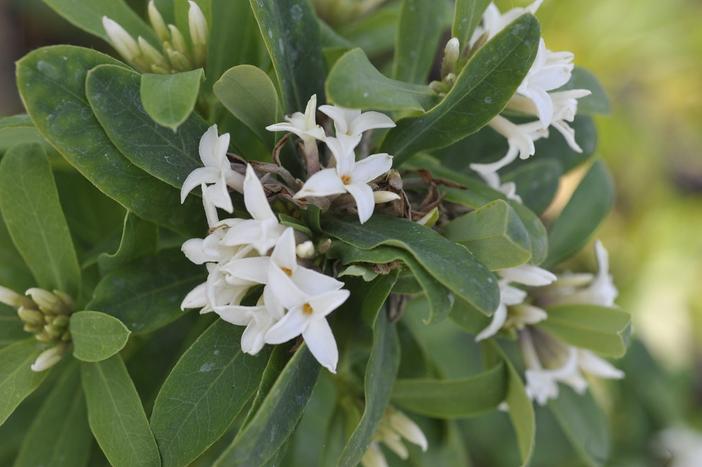Rock Daphne
(Daphne ×transatlantica)
Rock Daphne (Daphne ×transatlantica)
/
/

Megan Hansen
CC BY-SA 2.0
Image By:
Megan Hansen
Recorded By:
Copyright:
CC BY-SA 2.0
Copyright Notice:
Photo by: Megan Hansen | License Type: CC BY-SA 2.0 | License URL: https://creativecommons.org/licenses/by-sa/2.0/ | Uploader: MeganEHansen | Publisher: Flickr




Estimated Native Range
Summary
Daphne ×transatlantica, commonly known as Rock Daphne, is a semi-evergreen shrub resulting from an artificial cross between D. caucasica and D. collina. This moderate-growing plant typically reaches a height and width of 2-3 feet (0.6-0.9 meters). Rock Daphne is admired for its dense mounding form and its profusion of fragrant flowers, which can be pink or white and are quite showy, blooming in waves from spring through fall. The blooms are often followed by red fruits that are attractive but not edible.
Rock Daphne is valued for its extended blooming period and sweetly scented flowers, which make it a favorite for sensory gardens and residential landscapes. It is commonly used in border plantings, as a specimen in small gardens, or in containers. The plant thrives in part shade to full sun and prefers medium or fast-draining loam or sandy soils. It requires medium amounts of water, and while it is relatively low-maintenance, it benefits from being sheltered from harsh winter winds. Rock Daphne can suffer from root rot if overwatered or planted in poorly draining soil, and it may be susceptible to viral diseases and pests such as scale insects.CC BY-SA 4.0
Rock Daphne is valued for its extended blooming period and sweetly scented flowers, which make it a favorite for sensory gardens and residential landscapes. It is commonly used in border plantings, as a specimen in small gardens, or in containers. The plant thrives in part shade to full sun and prefers medium or fast-draining loam or sandy soils. It requires medium amounts of water, and while it is relatively low-maintenance, it benefits from being sheltered from harsh winter winds. Rock Daphne can suffer from root rot if overwatered or planted in poorly draining soil, and it may be susceptible to viral diseases and pests such as scale insects.CC BY-SA 4.0
Plant Description
- Plant Type: Shrub
- Height: 2-3 feet
- Width: 2-3 feet
- Growth Rate: Moderate
- Flower Color: Pink, White
- Flowering Season: Spring, Summer, Fall
- Leaf Retention: Semi-deciduous
Growth Requirements
- Sun: Full Sun, Part Shade
- Water: Medium
- Drainage: Fast, Medium
Common Uses
Border Plant, Fragrant, Groundcover, Low Maintenance, Potted Plant, Showy Flowers
Natural Habitat
Rock Daphne is a garden hybrid and not native to any specific habitat, but it is cultivated widely for its ornamental qualities
Other Names
Common Names: Daphne
Scientific Names: Daphne ×transatlantica
GBIF Accepted Name: